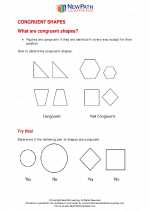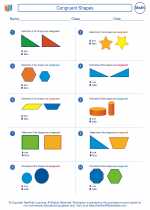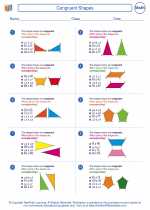Solving Problems in Math
Solving problems in math involves using various strategies and techniques to find solutions to mathematical equations, word problems, and real-life scenarios. It is an essential skill that requires critical thinking, logical reasoning, and a good understanding of mathematical concepts.
Steps to Solve Problems in Math:
- Understand the Problem: Read the problem carefully and identify what needs to be solved. Look for keywords and important information that will help you understand the problem.
- Devise a Plan: Choose a strategy or method to solve the problem. This may involve using a formula, drawing a diagram, making a table, or breaking the problem into smaller steps.
- Carry Out the Plan: Implement the chosen strategy and perform the necessary calculations or operations to find the solution.
- Check the Solution: Review your answer to ensure that it makes sense in the context of the problem. Check for any errors and verify the correctness of the solution.
Strategies for Problem Solving:
There are several strategies that can be used to solve math problems, such as:
- Use of Visual Aids: Drawing diagrams or using visual representations can help in understanding and solving problems related to geometry, fractions, and measurements.
- Guess and Check: Trying different values or approaches to see if they work can be a useful strategy, especially in problems with multiple variables or unknowns.
- Work Backwards: Start with the final result and work backwards to determine the steps needed to reach that result. This strategy is helpful in problems involving sequences or patterns.
- Use of Formulas and Equations: Applying relevant formulas and setting up equations can be effective in solving problems related to algebra, geometry, and physics.
- Logical Reasoning: Using logical reasoning and deduction to analyze the problem and arrive at a solution based on given information and constraints.
Practice Problems:
To improve your problem-solving skills, it's important to practice solving a variety of math problems. Here are some sample problems to get you started:
- Alice has 3 times as many apples as Bob. If Bob has 5 apples, how many apples does Alice have?
- Find the perimeter of a rectangle with a length of 8 cm and a width of 5 cm.
- Simplify the expression: 3(2x - 5) + 4(3x + 2)
- A bakery sold 120 loaves of bread in one day. If each loaf costs $3, how much money did the bakery make?
Conclusion:
Mastering problem-solving in math requires practice, patience, and a willingness to explore different approaches. By understanding the problem, devising a plan, and using effective strategies, you can become proficient in solving various types of math problems.
Now that you have a clear understanding of the steps and strategies involved in solving problems in math, practice the sample problems provided to enhance your skills.
.◂Math Worksheets and Study Guides Fifth Grade. Congruent Shapes

 Worksheet/Answer key
Worksheet/Answer key
 Worksheet/Answer key
Worksheet/Answer key
 Worksheet/Answer key
Worksheet/Answer key
